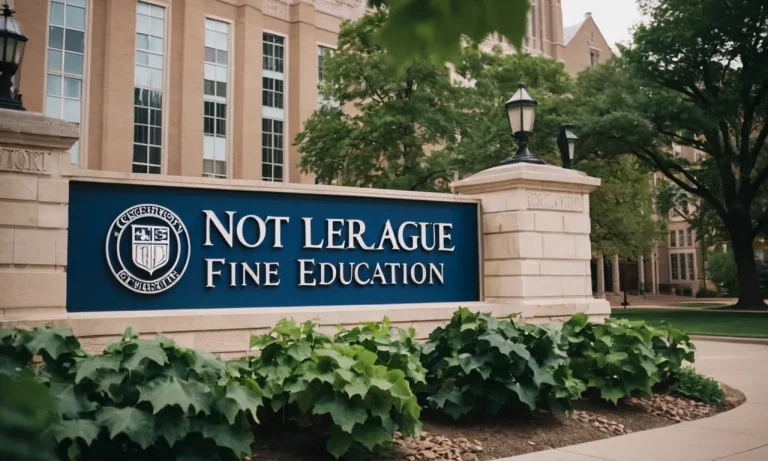Building a school is a complex and time-consuming process that involves numerous factors, from planning and design to construction and completion. Whether you’re a parent, educator, or community member, understanding the timeline for constructing a new school is crucial for effective planning and resource allocation.
If you’re short on time, here’s a quick answer to your question: The time it takes to build a school can range from 12 to 24 months, depending on various factors such as the size of the project, the complexity of the design, the availability of materials and labor, and any unforeseen circumstances that may arise during construction.
In this comprehensive article, we’ll delve into the intricate details of school construction, exploring the different phases involved, the key factors that influence the timeline, and the best practices for ensuring a smooth and efficient building process.
Whether you’re a school administrator, a contractor, or simply someone curious about the topic, this guide will provide you with valuable insights and a deeper understanding of what it takes to build a school from start to finish.
The Planning and Design Phase
The planning and design phase is the foundation that sets the stage for a successful school construction project. This crucial stage involves several key steps that must be meticulously executed to ensure the new educational facility meets all necessary requirements and serves its purpose effectively.
Let’s delve into the details of this phase:
Site Selection and Feasibility Studies
Choosing the right location for a new school is a critical decision that can significantly impact its accessibility, safety, and overall functionality. Feasibility studies are conducted to assess potential sites based on various factors, including:
- Proximity to residential areas and transportation networks
- Availability of land and its suitability for construction
- Environmental impact assessments
- Zoning regulations and local ordinances
According to Education Week, a reputable education publication, approximately 25% of the total project cost is attributed to site acquisition and preparation. 😮 Therefore, thorough site evaluation is crucial to ensure the chosen location aligns with the school’s needs and budget.
Architectural Design and Engineering
Once the site is selected, the architectural design and engineering phase commences. This stage involves collaboration between architects, engineers, and educational stakeholders to create a comprehensive plan that meets the school’s functional, aesthetic, and safety requirements.
The design process typically includes:
- Defining the educational program and space requirements
- Developing conceptual designs and detailed architectural plans
- Incorporating sustainable and energy-efficient features
- Ensuring compliance with building codes and accessibility standards
According to the American Institute of Architects, school design has evolved to prioritize flexible learning spaces, technology integration, and community engagement. 👏 The architectural design phase plays a crucial role in creating an environment that fosters learning, creativity, and overall student well-being.
Obtaining Permits and Approvals
Before construction can begin, it’s essential to obtain the necessary permits and approvals from various governmental agencies and regulatory bodies. This process can be complex and time-consuming, but it’s crucial to ensure the project complies with all applicable laws, regulations, and safety standards.
Some of the permits and approvals that may be required include:
- Zoning and land-use permits
- Building permits and inspections
- Environmental impact assessments and approvals
- Fire safety and accessibility approvals
According to Construction Executive, a leading industry publication, failure to obtain the required permits can result in costly fines, project delays, or even legal action. 😬 Therefore, it’s essential to work closely with local authorities and regulatory bodies to ensure a smooth and compliant permitting process.
The planning and design phase is a crucial and comprehensive process that lays the groundwork for a successful school construction project. By carefully considering site selection, architectural design, and obtaining necessary permits and approvals, stakeholders can ensure that the new educational facility meets the needs of students, educators, and the community while adhering to safety and regulatory standards.
Don’t underestimate the importance of this phase – it’s the foundation upon which the rest of the project is built!
The Construction Phase
The construction phase is the most exciting and visible part of building a new school. After months (or even years) of planning and preparation, the construction phase brings the project to life. This phase typically consists of several stages, each requiring careful coordination and execution by the construction team.
Site Preparation and Groundbreaking
Before any actual construction can begin, the site must be prepared. This may involve clearing the land, grading the terrain, and installing necessary utilities like water, sewer, and electrical lines.
Once the site is ready, a ceremonial groundbreaking event often takes place, marking the official start of construction. According to U.S. Census Bureau data, site preparation and groundbreaking for a new school can take anywhere from a few weeks to several months, depending on the size and complexity of the project.
Foundation and Structural Work
The foundation is the backbone of any building, and it’s crucial to get it right. Depending on the soil conditions and the size of the school, the foundation may be a simple slab or a more complex system of footings and piers.
After the foundation is laid, the structural framework of the building can begin to take shape. This typically involves erecting steel beams or pouring concrete walls and floors. According to Construction Manager Magazine, the foundation and structural work for a typical elementary school can take 3-6 months, while a larger high school may require 6-9 months or more.
Building Envelope and Interior Finishes
With the structural framework in place, the next step is to enclose the building and begin work on the interior finishes. This includes installing the roof, windows, and exterior cladding (such as brick or siding), as well as framing interior walls, laying flooring, and installing drywall.
Interior finishes like painting, cabinetry, and lighting fixtures are also completed during this phase. According to Virginia Department of General Services, the building envelope and interior finishes can take anywhere from 6 months to a year or more, depending on the size and complexity of the school.
Mechanical, Electrical, and Plumbing Systems
No modern school would be complete without intricate mechanical, electrical, and plumbing (MEP) systems. These systems are responsible for heating, cooling, ventilation, lighting, plumbing, and various other essential functions.
MEP work often happens concurrently with other construction phases, but it typically ramps up towards the end of the project. According to FacilitiesNet, MEP systems can account for up to 40% of the total construction cost for a new school, and their installation can take several months to complete.
Throughout the construction phase, regular inspections and quality control measures are essential to ensure that the work meets all building codes and safety standards. The construction team, architects, and school district representatives work closely together to monitor progress and address any issues that arise.
With careful planning, coordination, and execution, the construction phase can be completed on time and within budget, paving the way for a brand-new, state-of-the-art school to open its doors to students and educators.
Factors Influencing the Construction Timeline
Building a school is no small feat, and the timeline for its completion can vary significantly depending on several key factors. Understanding these variables is crucial for accurate planning and effective resource allocation throughout the construction process.
Project Size and Complexity
The scale and intricacy of a school project are undoubtedly among the most significant determinants of its construction duration. A larger facility, such as a comprehensive high school with numerous classrooms, laboratories, and specialized spaces like gymnasiums and auditoriums, will naturally require more time to construct than a smaller elementary school.
Additionally, the level of complexity in design and engineering can significantly impact the timeline. Projects incorporating innovative architectural features, sustainable building practices, or specialized facilities like science labs or performing arts centers may necessitate more meticulous planning and execution, thereby extending the overall timeframe.
Availability of Materials and Labor
The availability of construction materials and skilled labor can greatly influence the pace of a school building project. Supply chain disruptions, material shortages, or delays in procurement can cause setbacks and extend the timeline.
Similarly, a shortage of skilled tradespeople, such as electricians, plumbers, or carpenters, can hamper progress and lead to scheduling conflicts. According to a report by the Associated General Contractors of America, nearly 90% of construction firms reported difficulty in filling positions in 2022, highlighting the significance of this factor.
Weather Conditions and Seasonal Variations
Inclement weather and seasonal changes can significantly impact the construction timeline of a school project. Extreme temperatures, heavy rainfall, or snowfall can halt or slow down outdoor activities, leading to delays.
Additionally, certain construction tasks, such as pouring concrete or installing roofing materials, may be weather-dependent, necessitating adjustments to the schedule. In regions with distinct seasonal variations, construction may be limited to specific months, potentially extending the overall timeline.
😎
Regulatory Compliance and Inspections
Adhering to local building codes, zoning regulations, and safety standards is crucial for any construction project, including schools. The process of obtaining necessary permits, approvals, and undergoing inspections can add considerable time to the overall timeline.
Delays in securing approvals or failing inspections can result in work stoppages and subsequent schedule adjustments. Furthermore, schools often have additional requirements related to accessibility, fire safety, and environmental regulations, which can further complicate the compliance process.
According to the Environmental Protection Agency (EPA), over 50 million students and 6 million staff members in the United States spend a significant portion of their days in school buildings, underscoring the importance of stringent regulatory oversight.
By understanding and proactively addressing these key factors, stakeholders can better anticipate and mitigate potential delays, ensuring a smoother and more efficient construction process for new school facilities.
With meticulous planning, effective resource management, and a commitment to regulatory compliance, the dream of a state-of-the-art learning environment can become a reality within a reasonable timeframe. 👏
Best Practices for Efficient School Construction
Effective Project Management and Coordination
Constructing a school is a complex endeavor that requires meticulous planning, coordination, and execution. Effective project management is crucial to ensure that all stakeholders, including architects, engineers, contractors, and school administrators, are aligned and working towards a common goal.
By establishing clear lines of communication, setting realistic timelines, and regularly monitoring progress, project managers can mitigate potential delays and keep the construction process on track.
According to the Project Management Institute (PMI), projects with effective project management practices are more likely to be completed on time and within budget.
Utilizing Modular Construction Techniques
Modular construction, also known as prefabricated construction, has emerged as a game-changer in the school construction industry. This technique involves manufacturing building components off-site in a controlled environment, which are then transported and assembled on-site.
Modular construction can significantly reduce construction time by as much as 50%, according to a study by the Modular Building Institute. Additionally, it offers several advantages, such as improved quality control, reduced material waste, and enhanced safety for workers.
Many school districts across the country are embracing modular construction as a cost-effective and efficient solution for their building needs.
Leveraging Technology and Building Information Modeling (BIM)
The integration of technology and Building Information Modeling (BIM) can streamline the school construction process and enhance collaboration among stakeholders. BIM is a digital representation of a building’s physical and functional characteristics, allowing architects, engineers, and contractors to visualize and analyze the project from various perspectives.
By leveraging BIM, potential issues can be identified and resolved before construction begins, minimizing costly rework and delays. Additionally, BIM facilitates better decision-making, improves communication, and fosters a more efficient construction process.
According to a report by Autodesk, the use of BIM can reduce project costs by up to 20% and shorten construction schedules by 15%.
Fostering Collaboration and Communication
Effective collaboration and communication among all stakeholders involved in the school construction process are paramount for success. Regular meetings, progress reports, and open lines of communication can help ensure that everyone is on the same page and working towards a shared vision.
Embracing a collaborative approach not only fosters a positive working environment but also facilitates problem-solving and decision-making. By leveraging tools like project management software, video conferencing, and cloud-based document sharing platforms, stakeholders can stay connected and informed throughout the construction journey.
A study by the Lean Construction Institute found that projects with high levels of collaboration and communication experienced 30% fewer delays and 25% less rework.
Conclusion
Building a school is a complex and multifaceted endeavor that requires careful planning, coordination, and execution. From the initial planning and design phase to the final construction and completion, numerous factors can influence the timeline and overall success of the project.
By understanding the various stages involved, the key factors that impact the construction timeline, and the best practices for efficient school construction, stakeholders can better prepare for and navigate the challenges that may arise.
Effective project management, leveraging technology, and fostering collaboration among all parties involved are crucial for ensuring a smooth and timely completion of the school building project.
Ultimately, the time it takes to build a school is a small price to pay for creating a safe, modern, and conducive learning environment that will shape the minds of future generations. By investing in quality school construction, communities can provide students with the facilities they need to thrive academically and personally, setting them up for success in their educational journey and beyond.






